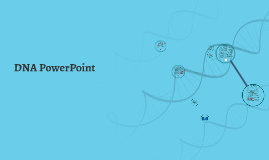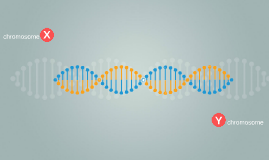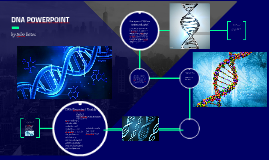DNA Powerpoint
Transcript: Composition How DNA Works DNA is made of subunits called nucleotides arranged in two strands. A nucleotide consists of a sugar, a phosphate, and a base. The two sides of the double helix are made of alternating sugar parts and phosphate parts The rungs of the ladder are made of a pair of bases. Adenine on one side of a rung, always pairs with thymine. DNA DNA stands for deoxyribonucleic acid. DNA is the genetic material of living things. It determines inherited characteristics. DNA looks like two twisted ladders. DNA is found in the nucleus of all eukaryotic cells. DNA contains four basic building blocks or bases: adenine, cytosine, guanine, and thymine. Fun Facts Long strands of chromatin are usually bundled loosely within the nucleus. A single strand of chromatin is made up of a long strand of DNA that is coiled around proteins. Each strand of DNA contains two halves that are connected in the middle and twisted in a double helix. When the cell is ready to divide, it has already copied its DNA. The copies stay attached as the chromatin is packaged into chromatids. Then, the two identical chromatids form a chromosome. The shape of DNA is a strand of DNA that looks like a twisted ladder. Structurally, DNA is made up of nucleotides. Nucleotides hook together to make the sugar-phosphate backbone of every strand of DNA. The bases pair up with opposite, matching bases on the other strand of DNA. The other two strands of DNA are linked together by weak hydrogen bonds and stacked like a ladder, and spirals around each other to make the double helix. In the 1950s, a biochemist named Erwin Chargaff found that the amount of denine in DNA always equals of adenine. A british chemist, Rosalind Franklin, was able to make images of DNA models. She used a process called x-ray diffraction to make the images Two other scientists named James Wattson and Francis crick, were also trying to solve how to find DNA's structure. So, Maurice Wilkins shared Franklin's data, without their knowledge, with James and Crick. DNA PowerPoint Structure Composition The pairing of bases allows the cell to replicate, or make copies of DNA. For example, the sequence CG AC will bond to the sequence CG TG. DNA is copied during the S or the synthesis phase of interphase. Two strands of DNA split down the middle so that a copy can be made. A new strand forms along each of the original strands. James Wattson and Francis Crick. History Each cell contains nine feet of DNA. In an average meal, you eat approximately 55 million cells. A human genome is approximately 3 billion base pairs in length (haploid). It takes 8 hours to completely copy its DNA. DNA was first isolated in 1869 by Friedrich Meischer. Every living thing has DNA, like a tree, a zebra, and a mushroom. Replication Process

















